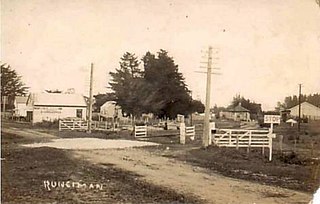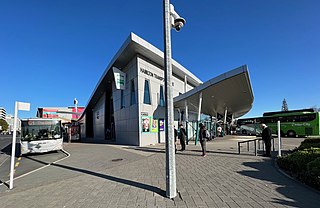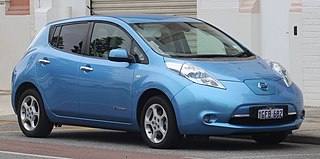Related Research Articles
Road tax, known by various names around the world, is a tax which has to be paid on, or included with, a motorised vehicle to use it on a public road.
Te Manatū WakaMinistry of Transport is the public service department of New Zealand charged with advising the New Zealand Government on transport policy. The Ministry works closely with other government transport partners, including the New Zealand Transport Agency (NZTA) to advance their strategic objectives.
The New Zealand Road Code is the official road safety manual for New Zealand published by NZ Transport Agency. It is a guide to safe driving practices and traffic law in New Zealand, and is also the basis for theory and practical driving tests.

Motoring taxation in the United Kingdom consists primarily of vehicle excise duty, which is levied on vehicles registered in the UK, and hydrocarbon oil duty, which is levied on the fuel used by motor vehicles. VED and fuel tax raised approximately £32 billion in 2009, a further £4 billion was raised from the value added tax on fuel purchases. Motoring-related taxes for fiscal year 2011/12, including fuel duties and VED, are estimated to amount to more than £38 billion, representing almost 7% of total UK taxation.

A steam bus is a bus powered by a steam engine. Early steam-powered vehicles designed for carrying passengers were more usually known as steam carriages, although this term was sometimes used to describe other early experimental vehicles too.
Hamilton City Libraries are a group of seven libraries in Hamilton, New Zealand, owned by the local city council. They lend fiction and non-fiction, magazines, audiobooks, and DVDs. From November 2016 to 9 July 2018, a substitute library compensated for the temporarily closed Central branch, and the libraries closed for over 2 months for COVID-19 in 2020. Waikato District residents living close to Hamilton City can freely use the Hamilton libraries.
State Highway 21 (SH 21) is a short 6.7-kilometre (4.2 mi) stretch of highway in the North Island of New Zealand. It links State Highway 1, Waikato Expressway at Tamahere and State Highway 3 at Ōhaupō. Its main destination is Hamilton Airport and Mystery Creek, where the National Agricultural Fieldays are held.
A vehicle miles traveled tax, also frequently referred to as a VMT tax, VMT fee, mileage-based fee, or road user charge, is a policy of charging motorists based on how many miles they have traveled.

State Highway 29 (SH 29) is a New Zealand state highway that travels over the Kaimai Ranges linking the Bay of Plenty and Waikato regions. For most of its length, SH 29 is a two-lane single carriageway with occasional passing lanes and slow vehicle bays. 5 km of it near its eastern terminus is part of the Takitimu Drive Toll Road.

Te Horo railway station was a flag station at Te Horo, in the Kāpiti Coast District on the North Island Main Trunk in New Zealand. It was served by diesel shuttles between Te Horo and Wellington. Only equipment sheds and a passing loop now remain at the station site.

Runciman railway station was a station on the North Island Main Trunk line in New Zealand, serving an area which had been sold by James Runciman in 1864, with plots near the proposed railway gaining higher prices.
State Highway 39 (SH 39) is a New Zealand state highway that forms a western bypass of the city of Hamilton. Gazetted in 1999, it is a generally quicker route to get between Auckland and New Plymouth as well as connecting to the Waitomo Caves, just south of the SH 39 southern terminus. The southernmost 14 km section has a concurrency with SH 31, as this highway has existed for much longer.
State Highway 23 (SH 23) is a New Zealand state highway that connects the towns of Raglan and Hamilton.
State Highway 27 (SH 27) is a state highway in the Waikato region of the North Island of New Zealand. It is an important north–south link along the Waihou/Piako valley and forms an important transport route across the mostly dairy farming Matamata-Piako District. SH 27, in conjunction with SH 2, is often used as an alternative route to SH 1 between Auckland and Tauranga, Rotorua and Taupō.

Public transport in Hamilton and the Waikato Region consists mainly of bus services, as well as some limited train and ferry services. Services are mainly infrequent, and investment hasn't been sufficient to compete with cars, so that subsidies, first introduced in 1971, have increased.
Horotiu is a small township on the west bank of the Waikato River in the Waikato District of New Zealand. It is on the Waikato Plains 13 km (8.1 mi) north of Hamilton and 5 km (3.1 mi) south of Ngāruawāhia. From early in the 20th century it developed around a freezing works and other industries.
Kaihere is a dispersed Waikato rural settlement on SH27, overlooking the Hauraki Plains. It has a school, hall, domain a rest area and is the starting point for the Hapuakohe Walkway.

Ohinewai Railway Station was a flag station on the North Island Main Trunk line, serving Ohinewai in the Waikato District of New Zealand, 59 mi (95 km) south of Auckland. It was 8.18 km (5.08 mi) north of Huntly, 7.26 km (4.51 mi) south of Rangiriri and 33 ft (10 m) above sea level. It was in the village, just north of Tahuna Rd.

Rangiriri was a flag station about 2 km (1.2 mi) south-east of Rangiriri, on the North Island Main Trunk line, in the Waikato District of New Zealand, 56 mi (90 km) south of Auckland. It was 588.2 km (365.5 mi) north of Wellington, 3.32 km (2.06 mi) south of Te Kauwhata, 7.26 km (4.51 mi) north of Ohinewai and 9 m (30 ft) above sea level.

The initial adoption of plug-in electric vehicles in New Zealand was supported by New Zealand Government policies, including monetary incentives such as electric vehicle discounts, exemptions from road user charges, and electric vehicle sales targets. By 2023 year-end, there were 106,942 registered plug-in electric vehicles in New Zealand, consisting of 76,550 battery-electric vehicles (BEV) and 30,392 plug-in hybrid vehicles (PHEV), together making up 2.2% of the national fleet of 4.8 million vehicles. In 2023, 27.2 percent of all new car registrations were plug-in electric vehicles.
References
- ↑ "Trade My Campervan". Trade My Campervan. Laura Davison. Retrieved 22 April 2015.
- ↑ "Road user charges" (PDF). NZTA. Archived from the original (PDF) on 2015-04-02.
- ↑ "RUC rates and transaction fees". NZTA. Retrieved 22 April 2015.
- ↑ "Roads". Te Ara - the Encyclopedia of New Zealand. 10 March 2016.
- ↑ "New mileage tax. Evening Star". paperspast.natlib.govt.nz. 11 March 1933. Retrieved 2024-11-05.
- ↑ "Finance Act, 1932-33 (No. 2)" (PDF). nzlii.org.
- ↑ "Taxation of Motor-vehicles —Annual Yield for the Years Ended 31st March, 1939, 1948, and 1949: (a) Customs Duties on Motor-vehicles and Parts; (6) Tire-tax; (c) Motor-spirits Tax; (d) Fees, etc., Under the Motor-vehicles Act, 1924; (e) Heavy Traffic Fees; (f) Drivers' Licences; and (g) Mileage Tax". paperspast.natlib.govt.nz. 1950. Retrieved 2024-11-05.
- 1 2 P D Chudleigh (1983). "Changes in New Zealand road taxation and financing" (PDF).
- ↑ "Road User Charges Act 1977 (1977 No 124)". www.nzlii.org. Retrieved 2024-11-05.
- ↑ "More truck meters. Press". paperspast.natlib.govt.nz. 2 October 1978. Retrieved 2024-11-05.
- ↑ "Truckers bitter about new tax. Press". paperspast.natlib.govt.nz. 26 November 1977. Retrieved 2024-11-05.